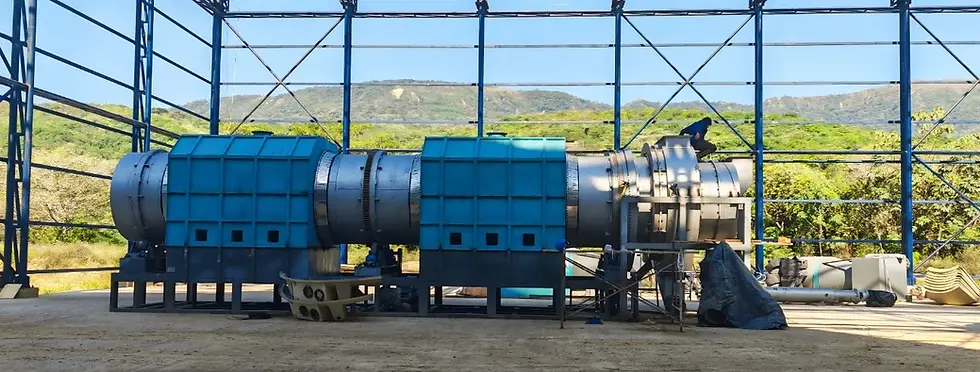Eco-Friendly and Sustainable: The Process and Uses of Coconut Shell Charcoal
- lee784287
- 9月11日
- 讀畢需時 3 分鐘
Coconut shell charcoal is an environmentally friendly and sustainable alternative to traditional charcoal. It’s produced from the hard, dense shells of coconuts, which are often discarded as waste after the nut is harvested. In recent years, the process of turning these shells into charcoal has gained attention for its ability to reduce waste, lower carbon footprints, and provide a renewable source of energy. Let's take a closer look at how coconut shell charcoal is made and its versatile uses.

The Process of Making Coconut Shell Charcoal
The process of making coconut shell charcoal is relatively simple, but it requires the right equipment and conditions to ensure quality and efficiency. The basic steps involve:
Collection of Coconut Shells: The first step is gathering the coconut shells. These are typically waste by-products from the coconut industry and can be sourced from local farmers or suppliers.
Drying the Shells: Before charcoal production, the coconut shells must be thoroughly dried. This helps remove any remaining moisture and ensures that the final product burns efficiently.
Carbonization (Pyrolysis): The coconut shells are then placed in a pyrolysis machine, which is designed to heat the shells in the absence of oxygen. This process, known as pyrolysis, involves heating the shells to high temperatures, typically between 400°C to 500°C, for several hours. During this stage, volatile gases are released, and the shells turn into charcoal.
Cooling and Storage: After carbonization, the charcoal is cooled and can be stored in airtight containers to prevent it from combusting in the air.
Grading and Packaging: Finally, the charcoal is sorted into different grades based on size and quality. It can be sold in various forms, such as lumps, briquettes, or powder, depending on its intended use.
This process not only makes use of an abundant natural resource but also reduces the environmental impact associated with traditional charcoal production, which often involves cutting down trees.
For a more detailed explanation of how to make charcoal from coconut shells, you can explore this comprehensive guide on the subject.
More in article: How to Make Charcoal from Coconut Shell
The Uses of Coconut Shell Charcoal
Coconut shell charcoal is extremely versatile and can be used in various industries and applications. Some of the most common uses include:
Fuel for Cooking and Heating: Coconut shell charcoal burns hotter and cleaner than regular charcoal, making it ideal for grilling and barbecuing. It’s also used as a sustainable fuel source for heating in some regions.
Activated Carbon: The charcoal can be further processed into activated carbon, which is widely used in water purification, air filtration, and even in the medical field for detoxification.
Soil Amendment: Charcoal is often used in agriculture to improve soil quality. It enhances soil structure, increases nutrient retention, and helps in moisture retention.
Biodegradable Products: Due to its sustainable nature, coconut shell charcoal can be used to create biodegradable products like biodegradable charcoal bags or eco-friendly packaging materials.
Crafts and Art: Artists and craftsmen sometimes use charcoal for making sculptures, pottery, or other creative works due to its unique texture and appearance.
The Environmental Benefits of Coconut Shell Charcoal
The environmental benefits of coconut shell charcoal cannot be overstated. Unlike traditional charcoal, which is made by cutting down trees, coconut shell charcoal is a by-product of the coconut industry, meaning it helps to reduce waste. It is also a carbon-neutral product, as the carbon released during its production is balanced by the carbon dioxide absorbed by the coconut tree during its growth.
Furthermore, the carbonization process can be done in a controlled environment, which minimizes air pollution. Coconut shell charcoal also burns cleaner, producing less smoke and ash compared to conventional charcoal, making it a more eco-friendly option for consumers.
Conclusion
In summary, coconut shell charcoal is an excellent example of how waste products can be transformed into valuable resources. Its production process not only helps reduce environmental waste but also contributes to sustainability by offering a renewable and cleaner source of energy. Whether used for fuel, filtration, or soil improvement, coconut shell charcoal is a versatile and eco-friendly solution that aligns perfectly with today’s focus on sustainability and reducing our carbon footprint.
By embracing coconut shell charcoal, we can take a step toward a more sustainable future.



留言